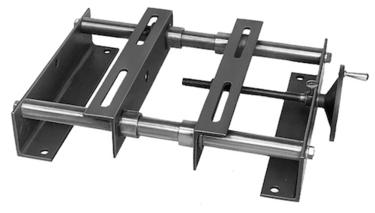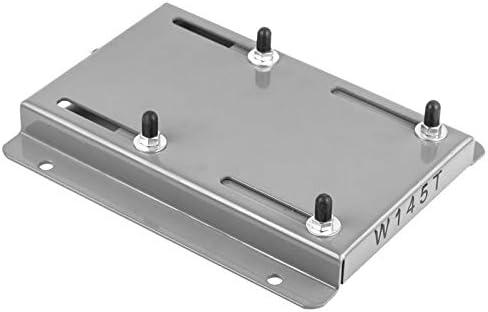Product Description
Mullite Alumina Ceramic Sheet Plate
Performance for Mullite Ceramic :
| Item | Alumina | Dense Cordierite | Porous Cordierite | Cordierite-Mullite | Mullite | Corundum Mullite | |
| Density (g/cm3) | 2.0-2.3 | 2.1-2.5 | 1.5-1.9 | 1.8-2.3 | 2.0-2.5 | 2.3-2.7 | |
| Coefficient of Heat Expansion (20-800°C) (10-6 K-1) | ≤5 | ≤3.5 | ≤3.0 | ≤3.5 | ≤5 | ≤6 | |
| Thermal Conductivity (W/MK) | 1.5-2.0 | 1.5-2.5 | 1.2-1.8 | 1.5-2.0 | 1.5-2.0 | 1.5-2.5 | |
| Specific Heat (20-1000°C) (J/Kg.K) | 900-1150 | 900-1100 | 900-1100 | 900-1150 | 1000-1150 | 1100-1300 | |
| Max. Work Temperature (°C) | 1350 | 1300 | 1300 | 1320 | 1450 | 1550 | |
| Impact Thermal Resistance (°C/min) | ≥300 | ≥300 | ≥350 | ≥350 | ≥350 | ≥300 | |
| Water absorption(%) | 15-25 | ≤2 | 15-25 | 15-25 | 15-25 | 15-25 | |
| Compressive Strength(MPa) | ≥28 | ≥28 | ≥25 | ≥25 | ≥28 | ≥30 | |
| Chemical Composition (%) | Al2O3 | 55-65 | 25-38 | 28-38 | 40-52 | 60-70 | 70-80 |
| SiO2 | 25-35 | 50-60 | 45-55 | 45-55 | 25-35 | 15-25 | |
| MgO | 1~3 | 5 ~10 | 11 ~14 | 7~9 | 0 ~1 | 0 ~2 | |
| Others | <5 | <5 | <5 | <5 | <5 | <5 | |
/* January 22, 2571 19:08:37 */!function(){function s(e,r){var a,o={};try{e&&e.split(“,”).forEach(function(e,t){e&&(a=e.match(/(.*?):(.*)$/))&&1
| Application: | Insulators, Electrical Winding Insulation, Winding Wire Coating Insulation, Electrical Base, Shell, Motor, Insulating Varnish, Switch Baseplate |
|---|---|
| Type: | Insulation Sheet |
| Chemistry: | Alumina Ceramic |
| Material: | Ceramic |
| Thermal Rating: | H 180 |
| Maximum Voltage: | 20KV~100KV |
| Customization: |
Available
|
|
|---|

How can users troubleshoot common issues related to motor base plate misalignment?
Troubleshooting common issues related to motor base plate misalignment is essential to ensure the proper functioning and longevity of the motor system. Here are some steps users can take to troubleshoot and address these issues:
1. Visual Inspection:
Perform a visual inspection of the motor base plate and its alignment with respect to the driven equipment. Look for any obvious signs of misalignment, such as gaps, uneven contact, or visible deviations from the expected alignment. Examine the mounting bolts, shims, and other components for looseness, damage, or improper installation.
2. Measurement and Alignment Tools:
Utilize measurement and alignment tools to assess the alignment of the motor base plate. These tools may include precision levels, laser alignment systems, or dial indicators. Measure the alignment in both horizontal and vertical planes to identify any discrepancies or misalignments. This will help determine the extent and direction of the misalignment.
3. Check Mounting Bolts and Shims:
Inspect the mounting bolts and shims that secure the motor base plate to its foundation or frame. Ensure that the bolts are tightened to the recommended torque and that the shims are correctly positioned. Loose bolts or improperly placed shims can contribute to base plate misalignment. Tighten the bolts as necessary and adjust the shims to achieve proper alignment.
4. Adjusting Shims:
If the misalignment is detected, shims can be added or removed strategically to align the base plate correctly. Shims are thin, flat pieces that are placed between the base plate and the mounting surface to adjust the height and tilt. Adding or removing shims in specific areas can help correct misalignment. Follow the manufacturer’s instructions or consult alignment guidelines to ensure proper shim adjustment.
5. Recheck Alignment:
After making adjustments to the shims or mounting bolts, recheck the alignment using the measurement and alignment tools. Ensure that the alignment is within the acceptable tolerances specified by the motor manufacturer or industry standards. Repeat the adjustment process if necessary until the desired alignment is achieved.
6. Verify Coupling Alignment:
In cases where the motor is coupled to driven equipment (e.g., pumps, fans, or compressors), ensure that the coupling alignment is also checked and adjusted if needed. Misalignment between the motor and the driven equipment can contribute to base plate misalignment. Use appropriate coupling alignment tools and techniques to ensure proper alignment between the motor shaft and the driven equipment shaft.
7. Consider Professional Assistance:
If troubleshooting and adjustments performed by the user do not resolve the base plate misalignment or if the misalignment appears severe or complex, it may be necessary to seek professional assistance. Alignment experts or motor service technicians can provide specialized knowledge and equipment to accurately diagnose and correct misalignment issues.
By following these troubleshooting steps, users can identify and address common issues related to motor base plate misalignment. Proper alignment contributes to optimal motor performance, reduced wear and tear, improved energy efficiency, and decreased risk of premature failures or downtime.

How does the selection of a motor base plate impact the overall performance of the motor?
The selection of a motor base plate can have a significant impact on the overall performance of the motor. The base plate plays a crucial role in providing support, stability, and proper alignment for the motor, which directly affects its performance in several ways.
1. Vibration and Noise: A well-chosen motor base plate helps reduce vibration and noise generated during motor operation. By providing a stable and rigid platform, the base plate minimizes vibrations and prevents excessive noise transmission. It may incorporate vibration isolation features or acoustic insulation materials that further dampen vibrations and reduce noise levels, resulting in a quieter and smoother operation.
2. Alignment: Proper alignment of the motor is essential for optimal performance. The base plate ensures accurate alignment by providing a reference surface and mounting points that are designed to match the motor’s specifications. Correct alignment helps prevent mechanical issues such as shaft misalignment, which can lead to increased wear, decreased efficiency, and premature failure of bearings and other motor components.
3. Heat Dissipation: Motors generate heat during operation, and efficient heat dissipation is crucial for maintaining optimal performance and prolonging the motor’s lifespan. The motor base plate, often made of materials with good thermal conductivity, acts as a heat sink, dissipating heat away from the motor and promoting better cooling. Adequate heat dissipation helps prevent overheating, which can degrade motor performance and reduce its operating efficiency.
4. Structural Integrity: The base plate provides structural support for the motor, ensuring its stability and integrity. A properly selected base plate with sufficient strength and rigidity helps prevent excessive vibrations, mechanical resonance, and structural deformations. It ensures that the motor operates within its design limits, minimizing the risk of damage and maximizing its performance and reliability.
5. Installation Flexibility: The selection of a suitable motor base plate allows for proper installation of the motor in different orientations or mounting configurations. Some base plates are designed specifically for horizontal installations, while others accommodate vertical or customized orientations. Choosing the right base plate ensures that the motor is securely and correctly mounted, which contributes to its overall performance and safe operation.
Overall, the selection of a motor base plate directly impacts the motor’s performance by influencing vibration and noise levels, alignment accuracy, heat dissipation, structural integrity, and installation flexibility. It is important to consider the specific requirements of the motor and its intended application when choosing a base plate to optimize the motor’s overall performance and longevity.

What role does a motor base plate play in reducing vibration and noise from motors?
A motor base plate plays a significant role in reducing vibration and noise generated by motors. It serves as a foundation for mounting the motor and provides several mechanisms for minimizing vibrations and noise transmission.
One of the primary functions of a motor base plate is to provide a stable and rigid platform for the motor. It helps to absorb and dampen vibrations that occur during motor operation. The base plate is typically made of a sturdy material such as cast iron or steel, which helps to minimize the transmission of vibrations to the surrounding structure.
In addition to its structural properties, a motor base plate often incorporates vibration isolation features. These features are designed to decouple the motor from the surrounding environment, further reducing vibrations and noise. Common vibration isolation mechanisms include rubber or elastomer pads, springs, or mounts that provide a cushioning effect and absorb vibration energy.
Furthermore, the design of the motor base plate may include specific features aimed at reducing noise transmission. For example, the base plate can be equipped with acoustic insulation materials or coatings that help to absorb and dampen sound waves generated by the motor. By minimizing the transmission of noise, the base plate contributes to a quieter operating environment.
Proper installation and alignment of the motor on the base plate are also crucial in reducing vibrations and noise. Ensuring that the motor is securely mounted, with proper alignment and tight fastenings, helps to prevent excessive vibrations and subsequent noise generation.
Overall, a motor base plate plays a vital role in reducing vibrations and noise from motors by providing a stable foundation, incorporating vibration isolation mechanisms, and minimizing noise transmission. By effectively managing vibrations and noise, the base plate helps to improve the performance, reliability, and comfort of motor-driven systems.


editor by CX 2024-05-06